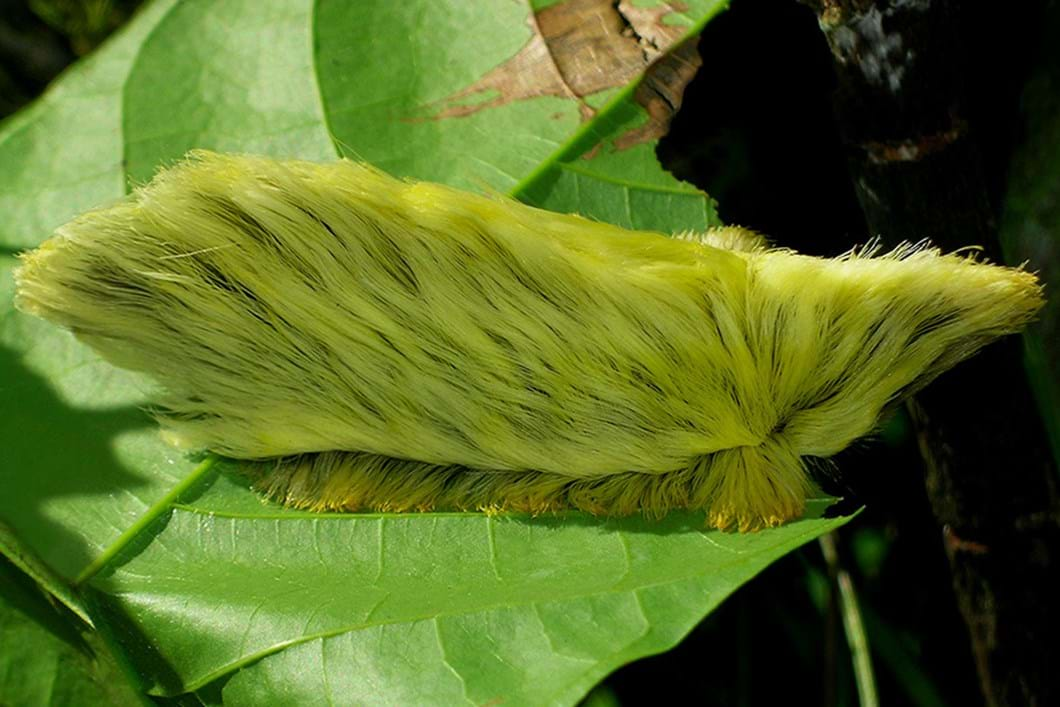Main image, Oleander Hawk Moth Caterpillar (Daphnis nerii, Sphingidae), by itchydogimages
Startled? Alarmed? Did I hear you mutter “WTF?” under your breath?
Then evolution wins again. Imagine if you were confronted by the same sight if you were a bird or a praying mantis or a snake for that matter. Eyespots (markings that resemble vertebrate eyes) have evolved many times in Lepidopterans (butterflies and moths). The fact that this adaptation has arisen independently so often in this group indicates the general effectiveness of this anti-predator defence. itchydogimages

Above, Walking forest, by Gabriela F. Ruellan

Above, Moth Caterpillar - Cerura vinula, by Lukas Jonaitis
I took this photo last summer. This caterpillar is one of the most beautifull caterpillars in Lithuania. I think it is very photogenic caterpillar because of its green colour and red tails which are visible only when caterpillar is scared. He has very nice face. :) Lukas Jonaitis

Above, Saturnia Pyri, by Jano De Cesare
This is a beautiful larva of a Saturnia Pyri, a butterfly which is around 16cm in maximum dimension at its mature state. Jano De Cesare

Above, Stinging Nettle Slug Caterpillar (Cup Moth, Setora baibarana, Limacodidae) “The Jester” by itchydogimages
First-in-line to the throne of the brilliant Yunnan lineage of Limacodid caterpillars, together with its alternate colour form, “The Clown”, “The Jester’s” livery is almost fluorescent. itchydogimages

Above, Stinging Nettle Slug Caterpillar, Limacodidae, by Andreas Kay

Above, 3rd Instar Cecropia, by Barb Sendelbach

Above, Big Foot (Cecropia), by MaggieDu

Above, Photo by Frank Starmer

Above, Dalceridae moth caterpillar, by Gerardo Aizpuru
Dubbed the ‘jewel caterpillar’, this lovely, translucent larva belongs to a family of moths known as Dalceridae. Although scientists are still unsure about the exact function of the caterpillar’s translucent, gooey attributes, the leading theory is that the slimy stickiness helps to deter predators. According to Scientific American, the jelly-like ‘cones’ that cover the body break off easily (sort of like a lizard’s tail), helping the caterpillar slip out of a predator’s clutches. source

Above, Flannel moth caterpillar, by Drriss & Marrionn found here
It may look like Donald Trump’s misplaced toupee (it’s actually been dubbed the ‘Donald Trump caterpillar’), but this flannel moth larva is actually not covered with hair at all. Those silky-looking threads are actually venomous spines that can cause intense, burning pain when touched, making the caterpillar one of the most venomous in the US. source

? I don’t understand
edit, I ended up doing a search to understand your comment… I get it now lol (I’m old, don’t judge)
And yes, I <3 moths too 😍